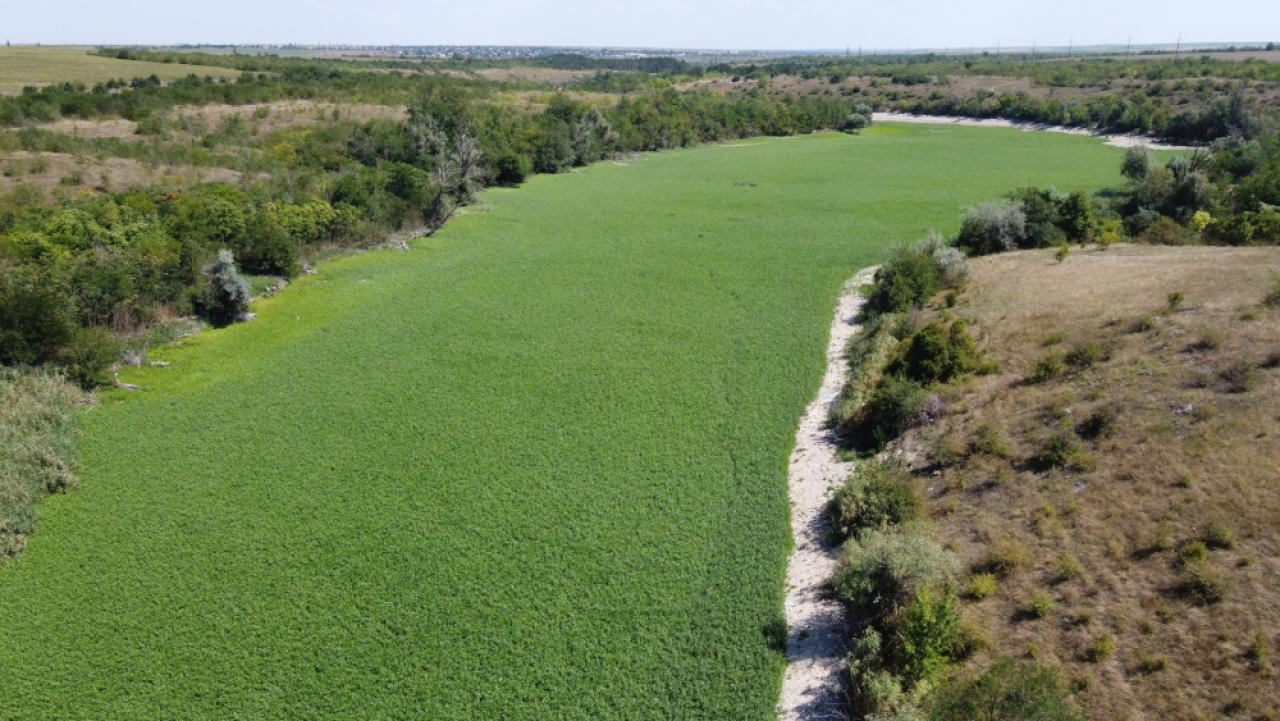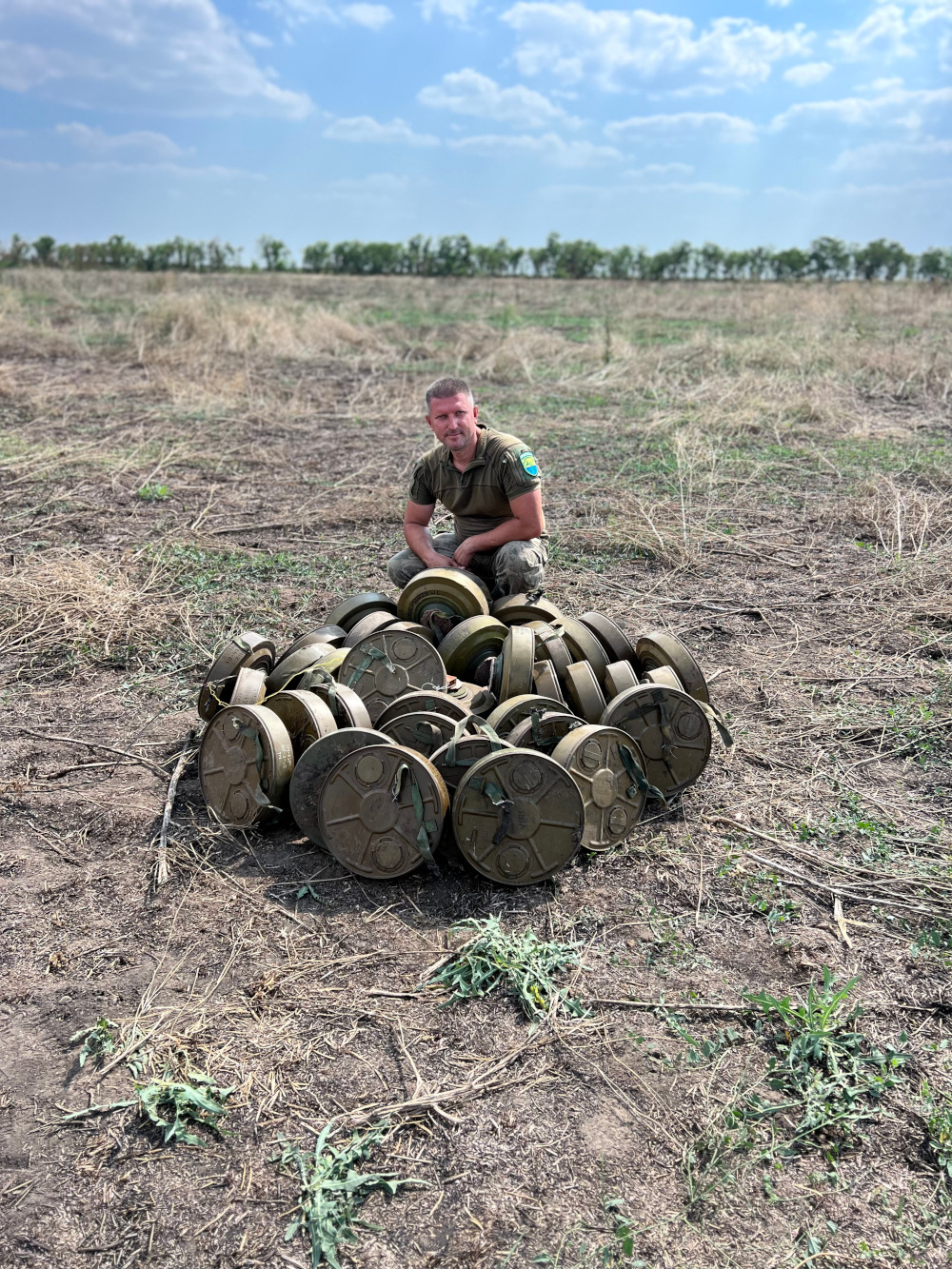Displaying items by tag: ukraine war
In war-torn Ukraine, nature refills reservoir destroyed by Russia
 A range of vegetation has moved into the former Kakhovka reservoir in Ukraine. Russian occupying forces destroyed the dam along the Dnieper River in June 2023. Photos by Serhiiy Skoryk
A range of vegetation has moved into the former Kakhovka reservoir in Ukraine. Russian occupying forces destroyed the dam along the Dnieper River in June 2023. Photos by Serhiiy Skoryk
Russia’s bombing of Kakhovka Dam in 2023 killed hundreds of people and tens of thousands of animals, but it also provided a potential ecological reset.
This story was originally published by The Revelator.
KYIV — In the early hours of June 6, 2023, two large explosions reverberated across cities and small towns located on the banks of the Dnieper River in southern Ukraine. The Russian military had reportedly set off multiple bombs, destroying the three-kilometer-long Kakhovka Dam and draining its massive reservoir into nearby settlements.
Water from the dam flooded the plains, killing hundreds of civilians and countless livestock, destroying farms, and displacing the residents of more than 37,000 homes.
The bombing made headlines around the world. It’s the long-term impact of the attack on the local biodiversity, however, that has scientists and experts concerned. In the weeks following the explosion, researchers from Ukrainian ministries and independent organizations carried out several assessments as best they could to the backdrop of the war.
They found that the attack had flooded about 60,000 hectares (230 square miles) of forest in at least four national parks, threatening an estimated population of 20,000 animals and 10,000 birds.
 Serhiiy Skoryk, a national park director, is seen with landmines that are typical of those that have literally flooded the conflict zone during the Russian occupation of parts of Ukraine. These mines and other hazards complicate efforts to gauge the impact of the Russian invasion on Ukraine’s unique natural environment.
Serhiiy Skoryk, a national park director, is seen with landmines that are typical of those that have literally flooded the conflict zone during the Russian occupation of parts of Ukraine. These mines and other hazards complicate efforts to gauge the impact of the Russian invasion on Ukraine’s unique natural environment.
- russian ukraine conflict
- russian ukraine war
- ukraine war
- ukraine reservoir
- war and nature
- war effects on environment
- war pollution ukraine
- war affects on environment
- the revelator
- kakhovka dam
- dnieper river
- rewilding
- nature reclaiming reservoirs
- examples of nature reclaiming reservoirs
- legacy landmines
- landmine dangers
From the archives: One year later, a look back at a prelude to the Russian invasion of Ukraine

(From February 2022): Menacing military buildup on Ukraine borders and Orwellian denials could snuff peaceful scientific cooperation
OAK RIDGE — I went to Russia in 2000 on one of the most extraordinary trips of my life. It was a long time ago, and a generation has passed, but I was left with many enduring and positive impressions of the country and its people.
The newspaper I worked for, The Daily Times in Maryville, paid for my trip to Moscow, then to Siberia, (and back again, to my surprise) to cover a contingent of Blount County politicos/bureaucrats and Oak Ridge DOE types visiting a far eastern Russian town, Zheleznogorsk, that had long been home to both nuclear and chemical weapons processing facilities.
The goal, under the flag of Sister Cities, was ultimately geared toward introducing alternative commerce and industry to this forgotten town so the potentially catastrophic expertise would not be exported abroad. The temptation was surely there. These were people with advanced degrees who now lived in a place where a lot of people had never eaten in a restaurant.
In Ukraine, fear of nuclear plants riven by Russia cuts to the core
 The Chornobyl Nuclear Plant in Ukraine is seen in 1986 after a fire devastated the plant and led to radiation emissions that spread across the European continent. United Nations
The Chornobyl Nuclear Plant in Ukraine is seen in 1986 after a fire devastated the plant and led to radiation emissions that spread across the European continent. United Nations
36 years after the Chornobyl crisis, Ukraine presents a test for nuclear reactor survivability
This story was originally published in The Revelator.
CHORNOBYL, UKRAINE — It took less than a minute after an unexpected power surge for one of the nuclear reactors at Chornobyl (Chernobyl in the Russian spelling) to explode on April 26, 1986, ripping the roof off and spewing dangerous toxins into the air.
The event, and emergency cleanup that followed, left 30 workers dead, thousands exposed to cancer-causing nuclear material and later death, and a legacy of radiation. Now, 36 years later and with war raging, Ukraine is desperate to prevent another nuclear disaster.
Nuclear reactors generate more than half of the country’s power. Ukraine is the first country with such a large and established nuclear energy program to experience war, according to the International Atomic Energy Agency.
Countless living things are under attack in Ukraine
 The Ukrainian roosting areas of the endangered Saker falcon face a threat from military conflict precipitated by the Russian invasion. International Union for Conservation of Nature
The Ukrainian roosting areas of the endangered Saker falcon face a threat from military conflict precipitated by the Russian invasion. International Union for Conservation of Nature
10 ways war is bad for the natural world
This story was originally published by The Revelator. Here's a related story about endangered species in Ukraine threatened by the invading forces of Vladimir Putin.
As war and conflicts rage on in Ukraine, Yemen, South Sudan, Libya and other places around the globe, it’s important to look at the long-term effects of military strife, which can destroy the environment as easily as it destroys lives. (Thousands of humans have already perished in the invasion.)
“Russia’s military operations in a heavily industrialized, densely populated nation containing numerous refineries, chemical plants, and metallurgical facilities further compounds the threat of these hostilities for Ukraine’s people and their environment, both now and for years to come.”
Here are 10 of the most dangerous ways war affects the animals and plants around us — many of which also harm humans in the process.
- ukraine war
- russian invasion of ukraine
- endangered species in ukraine
- war effects on environment
- ukraine pollution
- war pollution ukraine
- environmental threat ukraine
- john platt writer
- the revelator
- barbary lion
- wake island rail
- environmental impact war
- okapi conservation project
- thin green line foundation
- long term effect